I’ve always been a big fan of Martin’s 15 series guitars, which traditionally were made of solid mahogany.
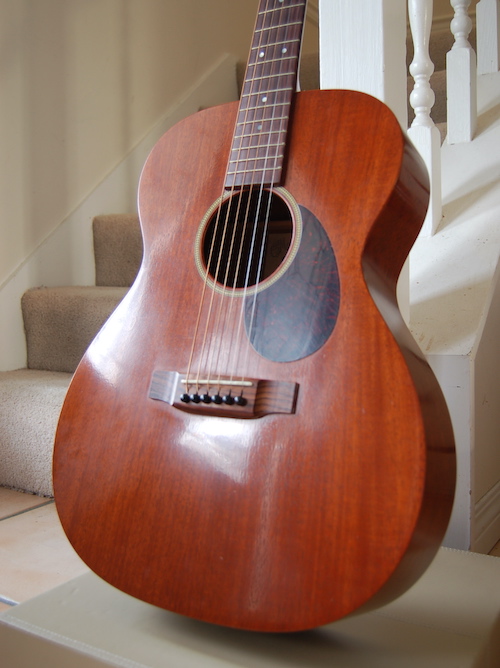
In 2002, Martin began slipping sapele guitars into the series. They looked and sounded similar enough, but a lot of guitarists wondered if this was a cost-cutting move that would leave them with a lesser guitar if they were to buy a sapele model.
Perhaps you’re wondering the same thing.
Rest assured, neither mahogany nor sapele makes lesser guitars—slightly different perhaps, but all good.
In this post I’ll go over the key differences between mahogany and sapele as a tonewood, and what you can expect from each.
Why Martin Made the Change
The mahogany traditionally used to make solid mahogany guitars was listed in 2003 as endangered under the Convention on International Trade in Endangered Species of Wild Fauna and Flora (CITES). The Martin Guitar Company and others anticipated the impact this would have on supply, and began incorporating more sapele into their guitar lines.
Sapele is, in many ways, an ideal substitute for mahogany as a guitar tonewood. The woods share a deep, reddish-brown color and many sonic qualities. Luthiers can work well with either of them, using them for guitar tops, sides, backs and even necks.
Not all Martin aficionados were happy with the proliferation of sapele, so around 2010 Martin introduced the 15M line of guitars, in which the ‘M’ indicated the use of mahogany rather than sapele.
These days, the 15 series is a mixed bag. They use sapele, its close cousin sipo, and any other type of mahogany they can get their hands on.
The Trees
Both mahogany and sapele are part of the Maliaceae family of plants, but they aren’t as closely related as you might think. Not only are they different species, they also belong to different genuses. Genus is the level between species and family in scientific nomenclature.
Mahogany
Traditional guitar mahogany, popularized by Martin and Gibson in the pre-war period, is Swietenia macrophylla. It’s commonly known as Honduran mahogany or bigleaf mahogany, and grows in Central and South America. These days, Martin saves it for a limited number of models and calls it “genuine mahogany.”
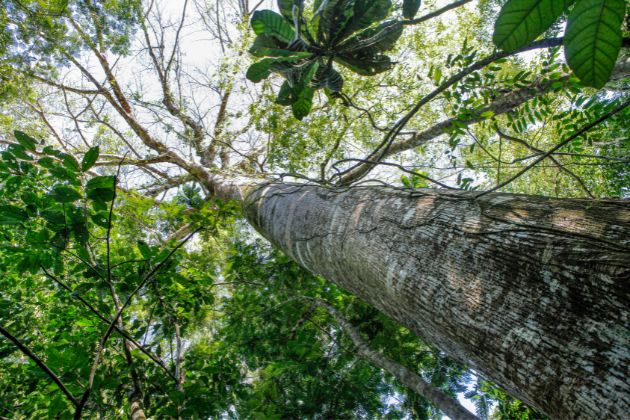
Swietenia mahagoni is a related species commonly known as Cuban mahogany or American mahogany. It grows in the West Indies and has become increasingly common in mahogany guitars.
Khaya ivorensis, which we know as African mahogany but actually belongs to a different genus, is also in Martin’s rotation. It grows in lowland tropical forests in western Africa.
Basically, they will use these woods interchangeably with sapele in their “mahogany” models. You never know what you’re going to get.
Sapele
Sapele’s scientific name is Entandrophragma cylindricum. It grows in central and western Africa. In fact, you’ll often hear it referred to as African mahogany because that’s where it grows and it is a legitimate mahogany substitute, but don’t get it confused with Khaya ivorensis. Totally different genus.
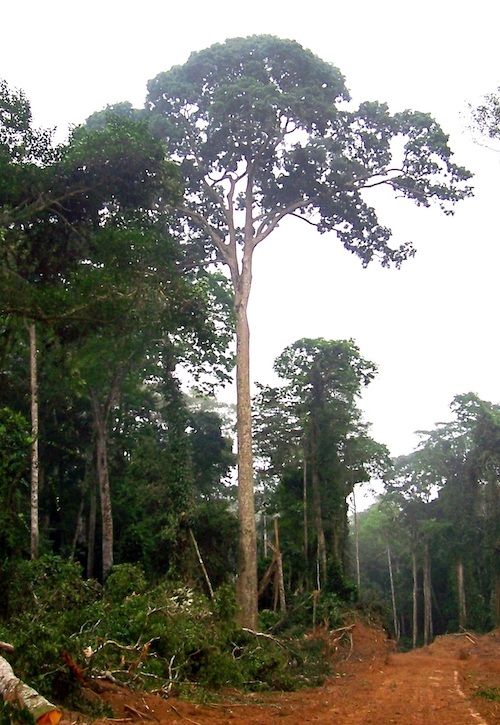
The table below shows all the plants in the Maliaceae family.
Those listed in deep mahogany color are universally considered to be true or genuine mahogany.
Those in burnt orange are generally considered close enough and may be used interchangeably in mahogany guitars.
Those in orange, including Sapele, are mahogany-related. Of these, sapele and sipo in particular are used in many mahogany-like guitars.
| Family | Genus | Species |
|---|---|---|
| Meliaceae | Cedrela | |
| Toona | ||
| Carapa | ||
| Swietenia | S. macrophylla (Honduran mahogany) | |
| S. humilis (Mexican mahogany) | ||
| S. mahogani (Cuban mahogany) | ||
| Khaya | K. antotheca (African mahogany) | |
| K. grandifolioloa (African mahogany) | ||
| K. ivorensis (African mahogany) | ||
| K. senegalensis (African mahogany) | ||
| Entandrophragma | ||
| Guarea | ||
| Turraenathus |
All are endangered, so many guitar makers will put together their mahogany models using whichever of these tonewoods is most readily available at the time.
Differences Between Mahogany and Sapele
We can make three key distinctions between mahogany and sapele:
- Mahogany is lighter than sapele
- Mahogany is softer than sapele
- Mahogany is more flexible than sapele
We’ll explain how these might—might—affect the sound of your guitar in a moment, but the important thing to remember is that we are talking about small degrees of difference here. There’s a reason sapele is the go-to substitute for mahogany.
The table below compares Honduran mahogany with sapele in terms of density, hardness and flexibility. It uses the following metrics:
- ADW (Average Dry Weight, in pounds per square foot): This measures density, or the weight of a particular volume of wood. Less dense woods are more balanced and resonant. Denser woods give you focus, projection and sustain.
- Janka (in pounds-force): This measures hardness, or how difficult it is to press something into the wood’s surface. Harder woods wear out more slowly, and are more resistant to dings and scratches.
- MOE (Modulus of Elasticity, in gigapascals): This measures stiffness, or how much the wood bends when a load is applied. A higher MOE indicates a stiffer wood that should produce a brighter sound, while lower MOE is more flexible, giving you warmth and sustain.
Key Metrics
| Metric | Honduran mahogany | Sapele |
|---|---|---|
| ADW (density) | 37 lbs/sq ft | 42 lbs/sq ft |
| Janka hardness | 900 lbf | 1410 lbf |
| MOE (stiffness) | 10.06 GPa | 12.04 GPa |
Appearance
The first time I wandered into a guitar store and saw a sapele Martin D-15 hanging on the wall, I wondered, “Why does that guitar have stripes?”
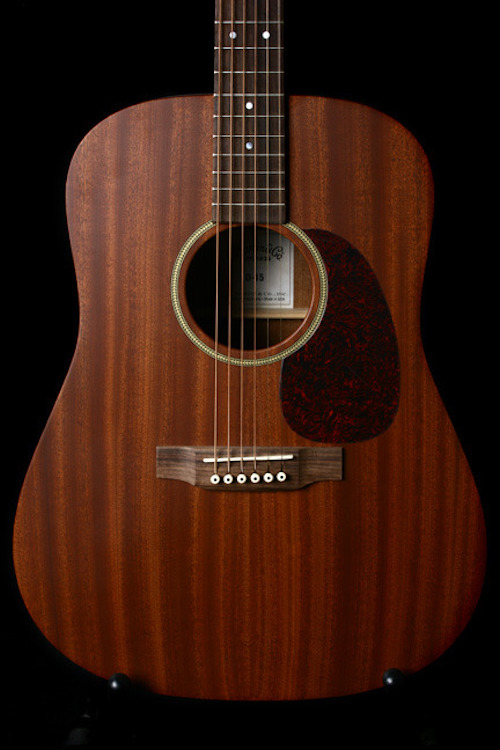
If you put a mahogany and sapele guitar side by side, they will both have a similar reddish-brown hue, but in certain light the sapele may appear to have vertical stripes running parallel to the guitar neck. This can be less obvious depending on how the wood has been cut.
You’ll see this to some degree in properly quartersawn mahogany as well, bit it’s much more pronounced in sapele.
You might also notice that the sapele has a slightly tighter grain and pores.
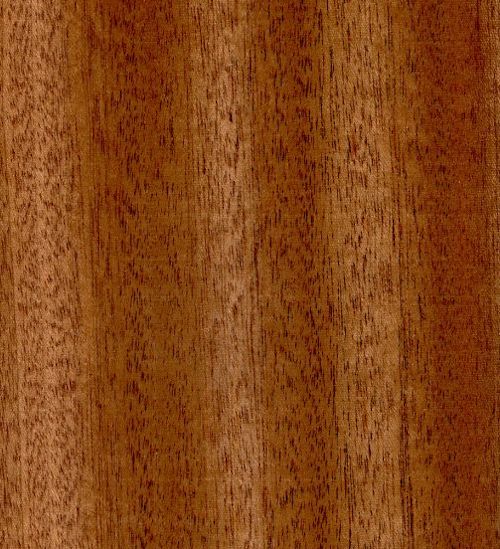
Time to Open Up
Sapele is slightly stiffer than mahogany, and as a result may take a little longer to open up. Both tonewoods are known to take their time opening up, much more so than Sitka spruce.
Tonal Properties
Again, sapele’s stiffness gives it a slightly brighter tone than mahogany, although you need a pretty well-trained ear to hear it. The greater flexibility of mahogany is generally associated with more warmth and sustain.
Sapele may have slightly better projection, which is associated with higher density tonewoods. Projection refers to the distance the sound can carry.
Mahogany is likely to have more balance and resonance, as these are qualities typically associated with lighter (less dense) tonewoods. Resonance refers to the richness and fullness of the sound—not necessarily the volume or projection.
Durability
Harder woods are more resistant to dings and scratches, so I’d give the edge to sapele here. It has a Janka hardness rating of 1410 lbf in comparison with mahogany’s 900 lbf. That’s fairly significant.
Without getting too technical, the Janka rating basically measures how difficult it is to press something into the surface of the wood.
If you’re playing a lot and taking your guitar into environments where it may not be treated with the utmost care, sapele is probably a good choice.
Keep in mind that the wood’s hardness shouldn’t have any effect on tone.
Price
It’s hard to generalize about the price of mahogany and sapele because as we’ve seen above, there are many different species of mahogany and they will vary greatly in price.
The African mahoganies in the Khaya genus tend to be comparable in price to Sapele, but are often a little cheaper. Sapele has been trending upward in price in recent years.
Honduran mahogany—regarded as “genuine” mahogany—is usually about double the cost of sapele.
Because genuine mahogany is more rare, it’s more expensive. But mahogany has a wide range of species, which means the price of a mahogany guitar will not necessarily carry this higher price tag.
Which is Better?
In all honesty, neither sapele nor mahogany is better than the other.
If you have a guitar made of solid Honduran mahogany, then you have a more valuable guitar than the same one made with sapele. But this is more due to the scarcity of the tonewood than its quality. Many players will tell you they prefer sapele to mahogany, or at least consider them equals.
View this post on Instagram
You might find the striped look of sapele more or less attractive than the relative monotone of mahogany, so that could be a factor if you’re deciding between the two.
If durability is a major concern, sapele might be your choice because it can withstand more punishment than mahogany.
In terms of tone, I don’t think you’ll find a discernible difference between the two. The difference in tonal characteristics between mahogany and sapele is so negligible that other factors in the guitar’s build will have a greater impact on its sound.
For that reason, I recommend the tried-and-true method of playing before you buy. Whether it’s mahogany or sapele, the guitar will tell you it’s the right one when you play it.

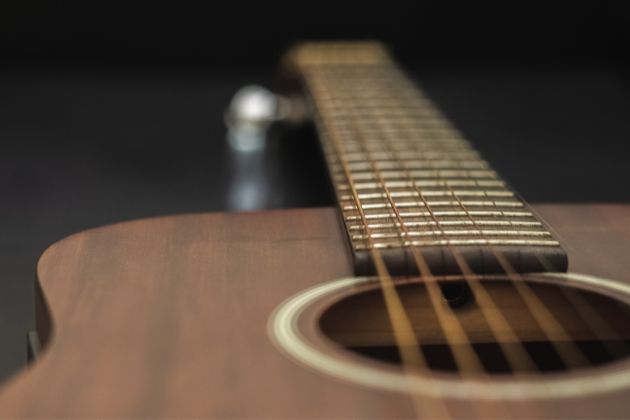
Hello Eric,
Very well done. This the best comparison I’ve yet seen on sepele vs mahogany. Put me in the sepele camp. The wood is fantastic, especially on a solid sepele-topped guitar. One other thing worth mentioning. Of all the many types of wood I’ve used, sepele and mahogany are the absolute best amplified. Rosewood and maple have too many overtones. My Fender acoustic SFX amp loves sepele guitars.
Joe Randazzo
South Burlington, Vermont
Thanks, Joe! Yes, I don’t record at all but I’ve definitely heard that about sapele/mahogany as well.
Yes thank you for your time and expertise. I have a few mahogany guitars and one sapele all of good quality. I find the sapele to be louder, more defined and like you stated, endless projection and headroom as compared to the mahogany. Just a bit more zing on top and a somewhat drier bass as well. Thanks again!